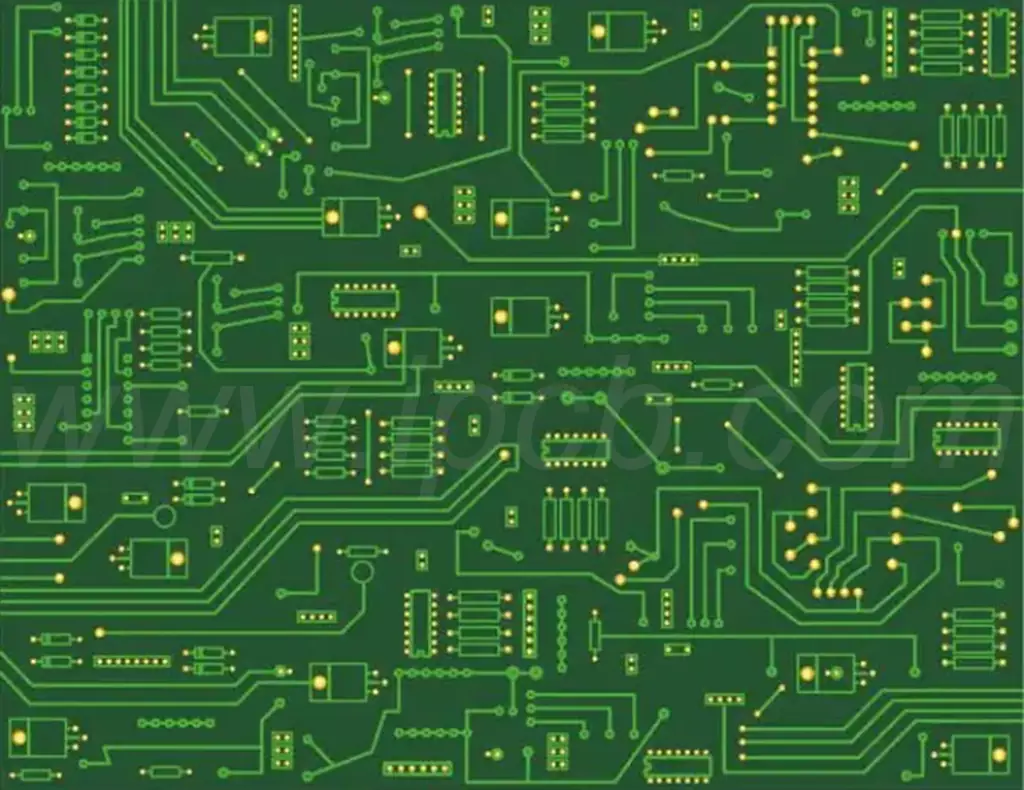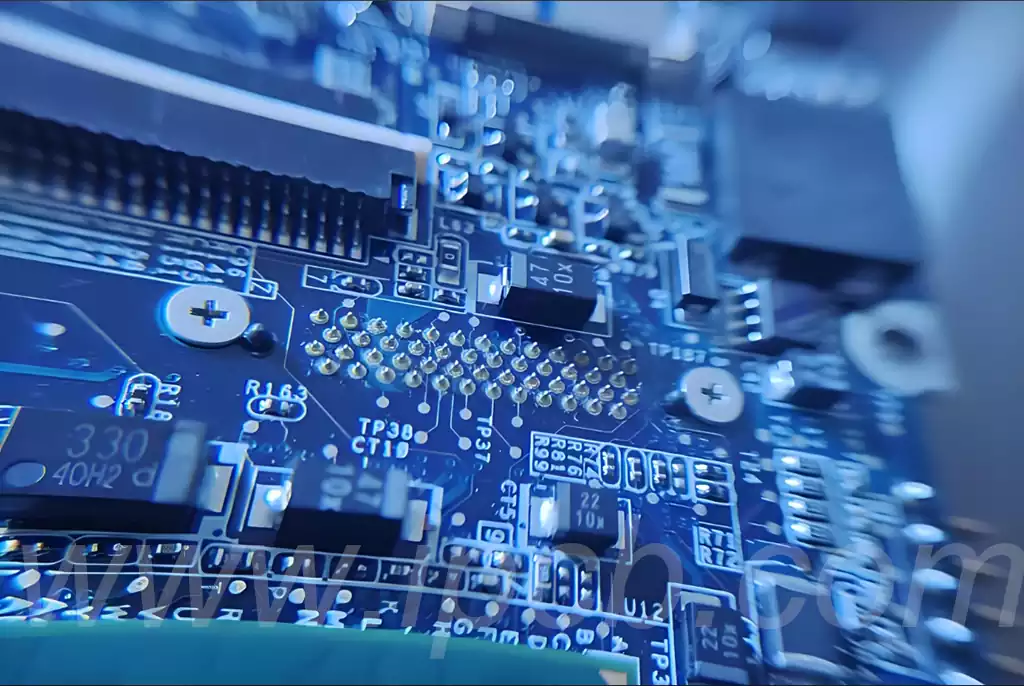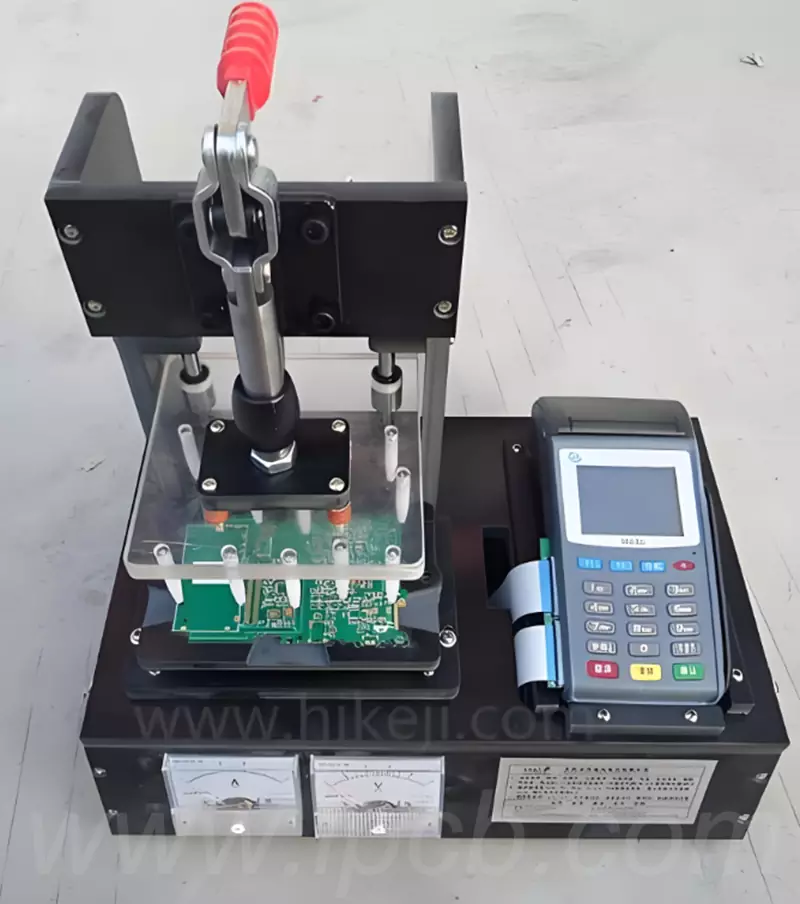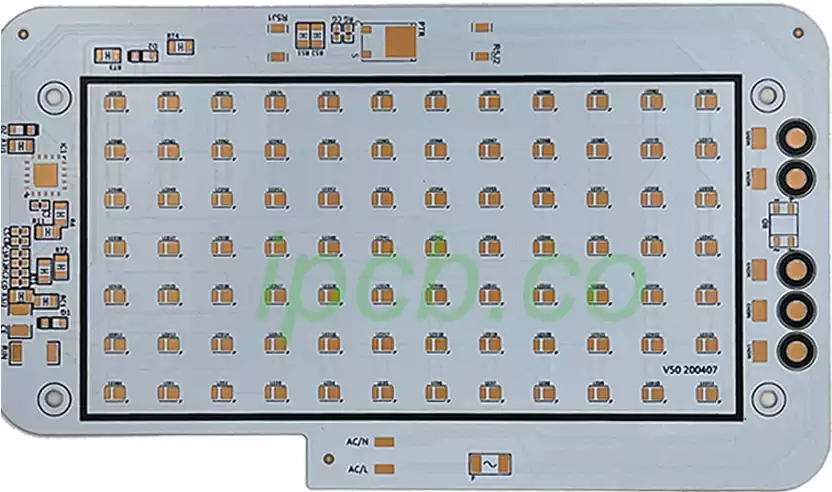A phone circuit board is a key component used for the connection and assembly of circuits inside a mobile phone. It is usually a thin board made of insulating material covered with a conductive layer that is used to connect and support the various electronic components inside a mobile phone, such as processors, memory, sensors, antennas, and so on. The primary role of a mobile phone pcb board is to provide electrical connections, mechanical support and thermal management while allowing communication and data transfer between electronic components.
Features and functions of phone circuit board:
1.Multi-layer structure: in order to meet the wiring requirements of complex circuits inside a mobile phone, phone circuit board usually adopt a multi-layer structure with two, four or even more layers. Multi-layer structure can provide greater wiring density, reduce the size of the pcb board, and improve the performance and stability of the circuit.
2.High-density wiring: with the increasing functionality and decreasing size of mobile phones, phone circuit board needs to achieve a higher density of wiring to ensure that the connection and communication between the various functional modules. High-density wiring requires pcb board manufacturing processes and materials with high precision and high reliability.
3.High-speed signal transmission:phone circuit board needs to support high-speed signal transmission to meet the requirements of high-speed processors, memories and communication modules. In order to ensure stable transmission of high-speed signals and low signal attenuation, mobile phone pcb boards usually use special materials and processes, such as low dielectric constant materials, microstrip line design.
4.Special function design: in addition to connecting and supporting various electronic components, mobile phone pcb board may also integrate some special function design, such as antenna design, power management, signal filtering, protection circuit and so on. These designs can improve the performance, stability and user experience of mobile phones.
5.Small size and lightweight: Since the phone circuit board needs to be installed inside the mobile phone, it needs to have a small size and lightweight features to adapt to the mobile phone’s compact design and thin and light appearance requirements.
Layer Distribution of Phone circuit board
Usually,phone circuit board is designed in four or six layers. The four-layer board has a simple distribution of levels, which is divided into two layers, i.e. the top layer and the bottom layer. The top layer is where the main chips, signal lines and keypads, etc. are located, while the bottom layer is mainly for connecting the battery, power supply and other modules. Four-layer PCB boards were usually used in early mobile phones, and nowadays they are almost replaced by six-layer PCB boards.
Six-layer PCB board distribution level is relatively more complex, in addition to the top and bottom layers, there are four internal layers, they are mainly used to connect the chip, transceiver signals, display and other modules. The top and bottom layers are mainly placed to connect the signal, power supply and more important modules, as well as digital cameras, accessories interface, etc., the internal level is mainly placed on the processor, memory, wireless modules and other electronic components.
In addition, in the design of phone circuit board, designers will be based on the distribution of the level to develop specific wiring and transfer principles,in order to make the communication between the various modules,as well as to send and receive signals to the outside world is more excellent.
The increased functionality of phone circuit board requires a higher level of PCB design, accompanied by a round of Bluetooth devices, cellular phones and the advent of the 3G era, making engineers pay more and more attention to the design skills of RF circuits. Radio Frequency (RF) circuit board design in theory there are many uncertainties, it is often described as a ‘black art’, but this point of view is only partially true, RF circuit board design there are many guidelines can be followed and should not be ignored conditions.

Phone circuit board in the design of the RF layout must meet the conditions:
1.In the design process, high power RF amplifier (HPA) and low noise amplifier (LNA) should be isolated as far as possible, in short, it is necessary to let the high-power RF transmitter circuits and low-power RF receiver circuits to maintain a certain distance to avoid mutual interference. Although mobile phones have a variety of functions and many components, phone circuit board space is relatively limited, coupled with the many constraints of wiring design, which undoubtedly puts a higher demand on design skills. In such cases, a four- to six-layer PCB design may be required to optimise the layout by allowing circuits on different layers to work alternately, rather than simultaneously. In addition, high-power circuits may sometimes include components such as RF buffers and voltage-controlled oscillators (VCOs). To ensure stability in the high-power areas of the phone circuit board, at least one full ground plane should be retained and punching holes in the area should be avoided if possible. Of course, increasing the area of the copper skin is also an effective way to improve performance. At the same time, sensitive analogue signals should be kept at a certain distance from high-speed digital signals and RF signals to reduce interference.
2.Design partitioning can be subdivided into two major aspects of physical partitioning and electrical partitioning. Physical partitioning is mainly concerned about the arrangement of components layout, direction and what kind of shielding measures; and electrical partitioning is further refined into the planning of power supply distribution, RF line direction, sensitive circuits and signals, and grounding arrangements for each partition.
Physical Partitioning:
Proper layout of components is critical to achieving a great RF design. An extremely effective strategy is to first target key components in the RF path and orientate them in such a way as to minimise the length of the RF path, ensuring that inputs and outputs are kept far apart, while maximising the space between high power and low power circuits. In the design of the pcb circuit board stack, it is wise to place the main ground plane (i.e., main ground) on the second layer below the surface layer, and to keep RF circuits travelling on the surface layer as much as possible. Reducing the size of the vias in the RF path not only reduces the path inductance and reduces the number of bad solder joints on the main ground, but also effectively curbs the probability of RF energy leakage to other parts of the laminated board. In terms of physical layout, linear circuits such as multi-stage amplifiers are usually sufficient for isolating multiple RF regions, but when faced with components such as duplexers, mixers, and IF amplifiers/mixers, which often suffer from the problem of multiple RF/IF signals interfering with each other, they must be handled with extra care to minimise such interference.
The RF and IF paths should be laid out in a vertical crossover fashion as much as possible, with a piece of grounding layer between them for isolation. The correct RF path is critical to the performance of the entire phone circuit board,which is why component layout takes up most of the time in phone circuit board design.A common practice when designing a mobile phone PCB is to place the low noise amplifier circuits on one side of the PCB board and the high power amplifiers on the other, and finally connect them to the RF ports and the antennas at the baseband processor end via a duplexer on the same side.A common trick to avoid RF energy transfer from one side of the board to the other is to use blind holes on both sides instead of straight through holes. It is also possible to minimise the adverse effects of straight through holes by arranging them in areas of the PCB that are not subject to RF interference.
However, sometimes it is not practical to ensure sufficient isolation between multiple circuit blocks, and it is then necessary to consider the use of metal shields to confine RF energy to the RF region. The metal shield must be soldered to the grounding layer and kept at an appropriate distance from the components, which can take up some valuable PCB board space. It is very important to maintain the integrity of the shield, so digital signal lines entering the metal shield should go as far as possible to the inner layer, and the next layer of the alignment layer should be the grounding layer.RF signal lines can be led from the small openings at the bottom of the metal shield and the grounding layer openings on the cabling layer, but it is necessary to arrange more grounding layers around the openings, and connect the grounding layers on different layers through multiple over-holes to ensure good grounding effect.
Electrical zoning
The principles of electrical partitioning are generally similar to those of physical partitioning, but there are some additional considerations involved. Certain components in a mobile phone use different operating voltages and are controlled by software to optimise battery life. This results in the need to manage multiple power sources within the phone, which adds to the complexity of isolation. Power is typically decoupled as soon as it is taken in from the connector, with the aim of filtering out any noise from outside the board. After that, the power is distributed through a series of switches or regulators.
On phone circuit board, most circuits have relatively small DC currents, so the width of the alignment is usually not a problem. However, for power supplies for high power amplifiers, a separate high current line as wide as possible must be provided in order to minimise the voltage drop during transmission. In order to minimise current losses, it is necessary to use multiple vias to transfer the current from one layer to another.In addition, if the power pin end of the high power amplifier is not adequately decoupled, high power noise may radiate throughout the PCB, causing various problems.It is therefore vital that high power amplifiers are grounded, and it is often necessary to design a special metal shield for them.
It is also important to ensure that the RF outputs are sufficiently distant from the RF inputs, and this applies to amplifiers, buffers and filters as well. In extreme cases, self-excited oscillations may result if the outputs of amplifiers and buffers are fed back to their inputs with the appropriate phase and amplitude. And ideally, they should be able to maintain stable operation at all temperatures and voltage conditions.
In practice, they can lose stability and mix noise and intermodulation signals into the RF signal. When the RF signal line has to be looped back from the input to the output of the filter, the bandpass characteristics of the filter may be severely impaired. To ensure good isolation between the input and output, it is necessary to firstly arrange a ring of grounding layer around the filter, and secondly a piece of grounding layer should also be arranged in the lower area of the filter and connected to the main grounding layer. In addition, it is also an effective measure to place the signal lines that need to pass through the filter as far away from the filter pins as possible. Throughout the phone circuit board, grounding everywhere must be handled with great care to avoid introducing additional coupling paths. In some cases, the option of using single-ended or balanced RF signal lines is available, when the principles regarding cross-talk and EMC/EMI still apply.
Correctly routed balanced RF signal lines are effective in reducing noise and cross-talk, but they typically have high impedance and the need to maintain reasonable line widths in order to match the impedance of the signal source, the alignment, and the load can present some challenges in practical wiring. Buffers can improve isolation performance because they can split the same signal into two parts that can be used to drive different circuits, especially critical when the local oscillator needs to drive multiple mixers. Mixers will not work properly if they reach common-mode isolation at RF frequencies, and buffers can well isolate impedance changes at different frequencies and prevent circuits from interfering with each other. Buffers can be beneficial to a design by being placed adjacent to the circuit that needs to be driven, thus shortening the length of the high power output alignment. Because buffers have low input signal levels, they cause less interference to other circuits on the board. Voltage Controlled Oscillators (VCOs) convert a changing voltage to a changing frequency, a feature used in high speed channel switching, but they also add noise to the RF signal by converting a small noise on the control voltage to a small change in frequency.
Phone circuit board design and RF layout is the cornerstone of mobile phone performance and stability. In the face of increasingly complex functional requirements and ever-shrinking size constraints, designers need to make comprehensive use of multi-layer structures, high-density wiring, special materials and technologies, while accurately grasping the key elements of RF layout, such as circuit isolation, design partitioning, signal protection and shielding measures, to ensure the high-performance performance of phone PCB boards.



